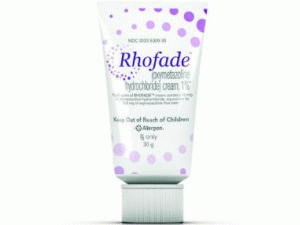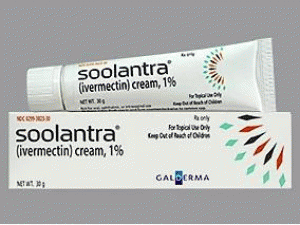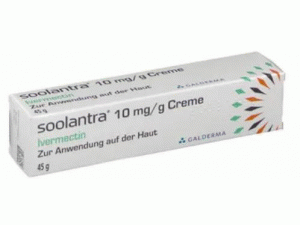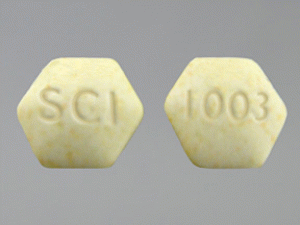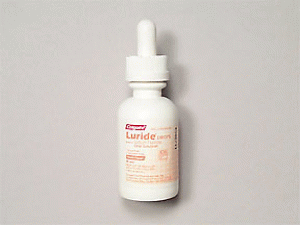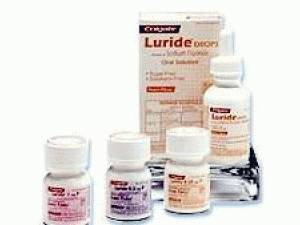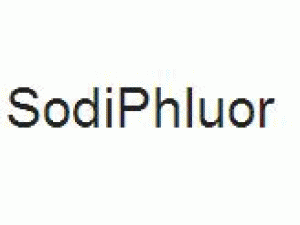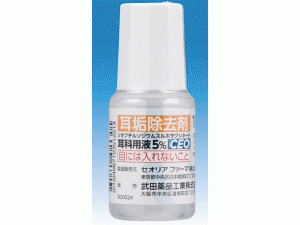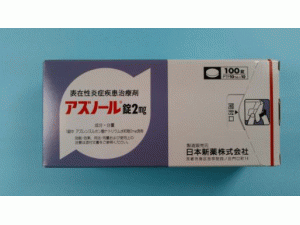帕利夫明_KEPIVANCE_帕利夫明冻干粉注射剂PALIFERMIN中英对照说明书
[caption id="attachment_32097" align="alignleft" width="300"]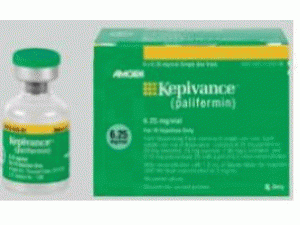 KEPIVANCE 6.25MG SDV(PALIFERMIN 帕利夫明冻干粉注射剂)[/caption]
药店国别:
产地国家:美国
处 方 药:是
所属类别:6.25毫克/瓶 3瓶/盒
包装规格:6.25毫克/瓶 3瓶/盒
计价单位:盒
生产厂家中文参考译名:SOBI
生产厂家英文名:SOBI
原产地英文商品名:KEPIVANCE 6.25MG SDV DPSH 3/PAC
原产地英文药品名:PALIFERMIN
中文参考商品译名:凯望斯冻干粉注射剂 6.25毫克/瓶 3瓶/盒
中文参考药品译名:帕利夫明
简介:
近日,美国食品和药物管理局(FDA)批准了Kepivance™(palifermin),这是第一个也是唯一一个被批准用于治疗口腔粘膜炎的药物。该适应症用于治疗在骨髓移植之前接受高剂量化疗的血液(血液)癌症患者的严重口腔粘膜炎。
注射用KEPIVANCE(palifermin),用于静脉注射
美国最初批准:2004年
作用机制:
KGF是成纤维细胞生长因子(FGF)家族中的内源蛋白,其与KGF受体结合。据报道,KGF与其受体的结合导致上皮细胞的增殖,分化和迁移。据报道,FGF家族中四种受体之一的KGF受体存在于检查的许多组织中的上皮细胞上,包括舌头,颊粘膜,食道,胃,肠,唾液腺,肺,肝,胰腺,肾,膀胱,乳腺,皮肤(毛囊和皮脂腺),以及眼睛的晶状体。据报道,KGF受体不存在于造血谱系的细胞上。内源性KGF由间充质细胞产生,并且响应于上皮组织损伤而上调。
在小鼠和大鼠中,Kepivance增强上皮细胞的增殖(通过Ki67免疫组织化学染色和BrDU摄取测量)并且证明舌,颊粘膜和胃肠道的组织厚度增加。 Kepivance已在化疗和放射性胃肠道损伤的小鼠模型中进行了研究。在这些模型中,与对照动物相比,在细胞毒性损伤之前和/或之后施用Kepivance改善了存活并减少了体重减轻。
已显示Kepivance在体外浓度≥10mcg/ mL时增强人上皮肿瘤细胞系的生长(比人体中的平均治疗浓度高> 15倍)。在裸鼠异种移植模型中,每周连续三次以每剂量1,500和4,000 mcg / kg(分别比推荐的人类剂量高25和67倍)的Kepivance治疗4至6周,与剂量有关 - 表达7种KGF受体的人肿瘤细胞系中1种的生长速率依赖性增加。
适应症和用法;
Kepivance是一种粘膜皮肤上皮人类生长因子,用于降低在自体造血干细胞支持下接受骨髓毒性治疗的恶性血液病患者的严重口腔粘膜炎的发生率和持续时间。 Kepivance被指示为预计在大多数患者中导致≥WHO3级粘膜炎的制备方案的支持性护理。
使用限制Kepivance的安全性和有效性尚未在非恶性血液病患者中确定
在同种异体造血干细胞支持下接受骨髓毒性治疗的血液系统恶性肿瘤患者,Kepivance无效降低严重粘膜炎的发生率。
不建议将Kepivance与美法仑200 mg / m2一起用作预处理方案。
剂量和给药:
在骨髓毒性治疗前和连续3天连续3天以60 mcg / kg /天的剂量静脉推注,总共6剂
在骨髓毒性治疗前24至48小时,在骨髓毒性治疗前给予前3个剂量,第三个剂量
在完成输注后的造血干细胞输注当天,以及在最近一次给予Kepivance后至少7天,在完成骨髓毒素治疗后最后3次剂量给药
剂量形式和强度:
用于注射:单剂量小瓶中的6.25mg冻干粉末
禁忌症:没有
警告和注意事项:
刺激肿瘤生长的可能性 - Kepivance不适用于非血液肿瘤。 Kepivance对患者角质形成细胞生长因子(KGF)受体表达,非造血肿瘤的刺激作用尚不清楚
不良反应:
最常见的不良反应(发生率≥20%和5%≥替泊)是皮疹,发热,血清淀粉酶升高(3/4级),瘙痒,红斑和水肿
要报告疑似不良反应,请致电1-866-773-5274联系瑞典Orphan Biovitrum,或致电1-800-FDA-1088或www.fda.gov/medwatch联系FDA。
药物相互作用:
肝素增加全身暴露
骨髓毒化疗
用于特定人群:
怀孕:根据动物数据,可能会造成胎儿伤害
护理母亲:考虑到药物对母亲的重要性,考虑停止使用药物或护理。
如何提供/存储和处理:
Kepivance以含有6.25mg palifermin的单剂量小瓶中的冻干粉末形式提供。
FDA Approves Kepivance™ for Treatment of Mucositis
The United States Food and Drug Administration (FDA) has approved Kepivance™ (palifermin), the first and only agent approved for the treatment of oral mucositis.[1] The indication is for the treatment of severe oral mucositis in patients with hematologic (blood) cancers that are undergoing high-dose chemotherapy prior to bone marrow transplantation.
Oral mucositis, also referred to as stomatitis, is inflammation of the oral mucosa, or lining of the mouth, that ranges in severity from redness to severe ulceration. It is a common and often serious complication of chemotherapy and/or radiation, affecting nearly all patients who undergo intensive treatment prior to a bone marrow or stem cell transplantation. When oral mucositis is severe, patients cannot swallow food or liquid and often have to be given nutrients through a vein. In addition, oral mucositis can cause severe pain, increase the risk of infection and may limit a patient’s ability to tolerate further treatment. The stopping or delaying of treatment reduces chances that optimal responses can be achieved. Furthermore, oral mucositis places a huge financial burden on the medical system with necessary supportive care measures and days spent in the hospital for the patient.
Kepivance™ is a type of keratin growth factor, and is made through laboratory processes to mimic the natural compound made in the body. The natural keratin growth factor has properties that stimulate the cells that line the mouth and gastrointestinal tract, called epithelial cells, to grow and develop. In clinical trials, it has demonstrated the ability to protect the epithelial cells from the damaging effects of chemotherapy and/or radiation and has reduced the incidence, severity and duration of oral mucositis in cancer patients undergoing intensive therapy.
The trial prompting FDA approval was presented at the 2003 annual meeting of the American Society of Clinical Oncology (ASCO) and recently published in the New England Journal of Medicine .
This trial included 212 patients with hematological cancer who were treated with either Kepivance™ or placebo (inactive substitute) prior to and following stem cell transplantation and the groups were then directly compared. Mucositis was graded on a scale of 0 to 4, with grades 3-4 considered severe. Grade 3 mucositis consisted of ulcerations with inability to eat solid food. Grade 4 mucositis consisted of the inability to take in any nutrition orally. Patients in this study were eva luated for 28 days.
The group of patients who received Kepivance™ experienced less severe mucositis and for a shorter duration of time, compared to patients who received a placebo. In the group of patients treated with Kepivance™, three times fewer patients experienced grade 4 mucositis, compared to those who received placebo (62% versus 20%, respectively). The duration of grade 4 mucositis was also shorter in patients treated with Kepivance™ (4.1 days), compared to those who received placebo (6.2 days). Furthermore, febrile neutropenia (low white blood cell levels accompanied by a fever that leaves patients extremely susceptible to infection), occurred in only 29% of patients treated with Kepivance™, compared to 46% of patients who received placebo. Narcotic use was reduced, both in quantity and duration, in the group of patients treated with Kepivance™. The most common side effect associated with Kepivance™ was mild rashes.
Patients with hematologic cancers who are to undergo a bone marrow or stem cell transplant, or those who are experiencing mucositis, may wish to speak with their physician about treatment with Kepivance™.
KEPIVANCE 6.25MG SDV(PALIFERMIN 帕利夫明冻干粉注射剂)[/caption]
药店国别:
产地国家:美国
处 方 药:是
所属类别:6.25毫克/瓶 3瓶/盒
包装规格:6.25毫克/瓶 3瓶/盒
计价单位:盒
生产厂家中文参考译名:SOBI
生产厂家英文名:SOBI
原产地英文商品名:KEPIVANCE 6.25MG SDV DPSH 3/PAC
原产地英文药品名:PALIFERMIN
中文参考商品译名:凯望斯冻干粉注射剂 6.25毫克/瓶 3瓶/盒
中文参考药品译名:帕利夫明
简介:
近日,美国食品和药物管理局(FDA)批准了Kepivance™(palifermin),这是第一个也是唯一一个被批准用于治疗口腔粘膜炎的药物。该适应症用于治疗在骨髓移植之前接受高剂量化疗的血液(血液)癌症患者的严重口腔粘膜炎。
注射用KEPIVANCE(palifermin),用于静脉注射
美国最初批准:2004年
作用机制:
KGF是成纤维细胞生长因子(FGF)家族中的内源蛋白,其与KGF受体结合。据报道,KGF与其受体的结合导致上皮细胞的增殖,分化和迁移。据报道,FGF家族中四种受体之一的KGF受体存在于检查的许多组织中的上皮细胞上,包括舌头,颊粘膜,食道,胃,肠,唾液腺,肺,肝,胰腺,肾,膀胱,乳腺,皮肤(毛囊和皮脂腺),以及眼睛的晶状体。据报道,KGF受体不存在于造血谱系的细胞上。内源性KGF由间充质细胞产生,并且响应于上皮组织损伤而上调。
在小鼠和大鼠中,Kepivance增强上皮细胞的增殖(通过Ki67免疫组织化学染色和BrDU摄取测量)并且证明舌,颊粘膜和胃肠道的组织厚度增加。 Kepivance已在化疗和放射性胃肠道损伤的小鼠模型中进行了研究。在这些模型中,与对照动物相比,在细胞毒性损伤之前和/或之后施用Kepivance改善了存活并减少了体重减轻。
已显示Kepivance在体外浓度≥10mcg/ mL时增强人上皮肿瘤细胞系的生长(比人体中的平均治疗浓度高> 15倍)。在裸鼠异种移植模型中,每周连续三次以每剂量1,500和4,000 mcg / kg(分别比推荐的人类剂量高25和67倍)的Kepivance治疗4至6周,与剂量有关 - 表达7种KGF受体的人肿瘤细胞系中1种的生长速率依赖性增加。
适应症和用法;
Kepivance是一种粘膜皮肤上皮人类生长因子,用于降低在自体造血干细胞支持下接受骨髓毒性治疗的恶性血液病患者的严重口腔粘膜炎的发生率和持续时间。 Kepivance被指示为预计在大多数患者中导致≥WHO3级粘膜炎的制备方案的支持性护理。
使用限制Kepivance的安全性和有效性尚未在非恶性血液病患者中确定
在同种异体造血干细胞支持下接受骨髓毒性治疗的血液系统恶性肿瘤患者,Kepivance无效降低严重粘膜炎的发生率。
不建议将Kepivance与美法仑200 mg / m2一起用作预处理方案。
剂量和给药:
在骨髓毒性治疗前和连续3天连续3天以60 mcg / kg /天的剂量静脉推注,总共6剂
在骨髓毒性治疗前24至48小时,在骨髓毒性治疗前给予前3个剂量,第三个剂量
在完成输注后的造血干细胞输注当天,以及在最近一次给予Kepivance后至少7天,在完成骨髓毒素治疗后最后3次剂量给药
剂量形式和强度:
用于注射:单剂量小瓶中的6.25mg冻干粉末
禁忌症:没有
警告和注意事项:
刺激肿瘤生长的可能性 - Kepivance不适用于非血液肿瘤。 Kepivance对患者角质形成细胞生长因子(KGF)受体表达,非造血肿瘤的刺激作用尚不清楚
不良反应:
最常见的不良反应(发生率≥20%和5%≥替泊)是皮疹,发热,血清淀粉酶升高(3/4级),瘙痒,红斑和水肿
要报告疑似不良反应,请致电1-866-773-5274联系瑞典Orphan Biovitrum,或致电1-800-FDA-1088或www.fda.gov/medwatch联系FDA。
药物相互作用:
肝素增加全身暴露
骨髓毒化疗
用于特定人群:
怀孕:根据动物数据,可能会造成胎儿伤害
护理母亲:考虑到药物对母亲的重要性,考虑停止使用药物或护理。
如何提供/存储和处理:
Kepivance以含有6.25mg palifermin的单剂量小瓶中的冻干粉末形式提供。
FDA Approves Kepivance™ for Treatment of Mucositis
The United States Food and Drug Administration (FDA) has approved Kepivance™ (palifermin), the first and only agent approved for the treatment of oral mucositis.[1] The indication is for the treatment of severe oral mucositis in patients with hematologic (blood) cancers that are undergoing high-dose chemotherapy prior to bone marrow transplantation.
Oral mucositis, also referred to as stomatitis, is inflammation of the oral mucosa, or lining of the mouth, that ranges in severity from redness to severe ulceration. It is a common and often serious complication of chemotherapy and/or radiation, affecting nearly all patients who undergo intensive treatment prior to a bone marrow or stem cell transplantation. When oral mucositis is severe, patients cannot swallow food or liquid and often have to be given nutrients through a vein. In addition, oral mucositis can cause severe pain, increase the risk of infection and may limit a patient’s ability to tolerate further treatment. The stopping or delaying of treatment reduces chances that optimal responses can be achieved. Furthermore, oral mucositis places a huge financial burden on the medical system with necessary supportive care measures and days spent in the hospital for the patient.
Kepivance™ is a type of keratin growth factor, and is made through laboratory processes to mimic the natural compound made in the body. The natural keratin growth factor has properties that stimulate the cells that line the mouth and gastrointestinal tract, called epithelial cells, to grow and develop. In clinical trials, it has demonstrated the ability to protect the epithelial cells from the damaging effects of chemotherapy and/or radiation and has reduced the incidence, severity and duration of oral mucositis in cancer patients undergoing intensive therapy.
The trial prompting FDA approval was presented at the 2003 annual meeting of the American Society of Clinical Oncology (ASCO) and recently published in the New England Journal of Medicine .
This trial included 212 patients with hematological cancer who were treated with either Kepivance™ or placebo (inactive substitute) prior to and following stem cell transplantation and the groups were then directly compared. Mucositis was graded on a scale of 0 to 4, with grades 3-4 considered severe. Grade 3 mucositis consisted of ulcerations with inability to eat solid food. Grade 4 mucositis consisted of the inability to take in any nutrition orally. Patients in this study were eva luated for 28 days.
The group of patients who received Kepivance™ experienced less severe mucositis and for a shorter duration of time, compared to patients who received a placebo. In the group of patients treated with Kepivance™, three times fewer patients experienced grade 4 mucositis, compared to those who received placebo (62% versus 20%, respectively). The duration of grade 4 mucositis was also shorter in patients treated with Kepivance™ (4.1 days), compared to those who received placebo (6.2 days). Furthermore, febrile neutropenia (low white blood cell levels accompanied by a fever that leaves patients extremely susceptible to infection), occurred in only 29% of patients treated with Kepivance™, compared to 46% of patients who received placebo. Narcotic use was reduced, both in quantity and duration, in the group of patients treated with Kepivance™. The most common side effect associated with Kepivance™ was mild rashes.
Patients with hematologic cancers who are to undergo a bone marrow or stem cell transplant, or those who are experiencing mucositis, may wish to speak with their physician about treatment with Kepivance™.
 KEPIVANCE 6.25MG SDV(PALIFERMIN 帕利夫明冻干粉注射剂)[/caption]
药店国别:
产地国家:美国
处 方 药:是
所属类别:6.25毫克/瓶 3瓶/盒
包装规格:6.25毫克/瓶 3瓶/盒
计价单位:盒
生产厂家中文参考译名:SOBI
生产厂家英文名:SOBI
原产地英文商品名:KEPIVANCE 6.25MG SDV DPSH 3/PAC
原产地英文药品名:PALIFERMIN
中文参考商品译名:凯望斯冻干粉注射剂 6.25毫克/瓶 3瓶/盒
中文参考药品译名:帕利夫明
简介:
近日,美国食品和药物管理局(FDA)批准了Kepivance™(palifermin),这是第一个也是唯一一个被批准用于治疗口腔粘膜炎的药物。该适应症用于治疗在骨髓移植之前接受高剂量化疗的血液(血液)癌症患者的严重口腔粘膜炎。
注射用KEPIVANCE(palifermin),用于静脉注射
美国最初批准:2004年
作用机制:
KGF是成纤维细胞生长因子(FGF)家族中的内源蛋白,其与KGF受体结合。据报道,KGF与其受体的结合导致上皮细胞的增殖,分化和迁移。据报道,FGF家族中四种受体之一的KGF受体存在于检查的许多组织中的上皮细胞上,包括舌头,颊粘膜,食道,胃,肠,唾液腺,肺,肝,胰腺,肾,膀胱,乳腺,皮肤(毛囊和皮脂腺),以及眼睛的晶状体。据报道,KGF受体不存在于造血谱系的细胞上。内源性KGF由间充质细胞产生,并且响应于上皮组织损伤而上调。
在小鼠和大鼠中,Kepivance增强上皮细胞的增殖(通过Ki67免疫组织化学染色和BrDU摄取测量)并且证明舌,颊粘膜和胃肠道的组织厚度增加。 Kepivance已在化疗和放射性胃肠道损伤的小鼠模型中进行了研究。在这些模型中,与对照动物相比,在细胞毒性损伤之前和/或之后施用Kepivance改善了存活并减少了体重减轻。
已显示Kepivance在体外浓度≥10mcg/ mL时增强人上皮肿瘤细胞系的生长(比人体中的平均治疗浓度高> 15倍)。在裸鼠异种移植模型中,每周连续三次以每剂量1,500和4,000 mcg / kg(分别比推荐的人类剂量高25和67倍)的Kepivance治疗4至6周,与剂量有关 - 表达7种KGF受体的人肿瘤细胞系中1种的生长速率依赖性增加。
适应症和用法;
Kepivance是一种粘膜皮肤上皮人类生长因子,用于降低在自体造血干细胞支持下接受骨髓毒性治疗的恶性血液病患者的严重口腔粘膜炎的发生率和持续时间。 Kepivance被指示为预计在大多数患者中导致≥WHO3级粘膜炎的制备方案的支持性护理。
使用限制Kepivance的安全性和有效性尚未在非恶性血液病患者中确定
在同种异体造血干细胞支持下接受骨髓毒性治疗的血液系统恶性肿瘤患者,Kepivance无效降低严重粘膜炎的发生率。
不建议将Kepivance与美法仑200 mg / m2一起用作预处理方案。
剂量和给药:
在骨髓毒性治疗前和连续3天连续3天以60 mcg / kg /天的剂量静脉推注,总共6剂
在骨髓毒性治疗前24至48小时,在骨髓毒性治疗前给予前3个剂量,第三个剂量
在完成输注后的造血干细胞输注当天,以及在最近一次给予Kepivance后至少7天,在完成骨髓毒素治疗后最后3次剂量给药
剂量形式和强度:
用于注射:单剂量小瓶中的6.25mg冻干粉末
禁忌症:没有
警告和注意事项:
刺激肿瘤生长的可能性 - Kepivance不适用于非血液肿瘤。 Kepivance对患者角质形成细胞生长因子(KGF)受体表达,非造血肿瘤的刺激作用尚不清楚
不良反应:
最常见的不良反应(发生率≥20%和5%≥替泊)是皮疹,发热,血清淀粉酶升高(3/4级),瘙痒,红斑和水肿
要报告疑似不良反应,请致电1-866-773-5274联系瑞典Orphan Biovitrum,或致电1-800-FDA-1088或www.fda.gov/medwatch联系FDA。
药物相互作用:
肝素增加全身暴露
骨髓毒化疗
用于特定人群:
怀孕:根据动物数据,可能会造成胎儿伤害
护理母亲:考虑到药物对母亲的重要性,考虑停止使用药物或护理。
如何提供/存储和处理:
Kepivance以含有6.25mg palifermin的单剂量小瓶中的冻干粉末形式提供。
FDA Approves Kepivance™ for Treatment of Mucositis
The United States Food and Drug Administration (FDA) has approved Kepivance™ (palifermin), the first and only agent approved for the treatment of oral mucositis.[1] The indication is for the treatment of severe oral mucositis in patients with hematologic (blood) cancers that are undergoing high-dose chemotherapy prior to bone marrow transplantation.
Oral mucositis, also referred to as stomatitis, is inflammation of the oral mucosa, or lining of the mouth, that ranges in severity from redness to severe ulceration. It is a common and often serious complication of chemotherapy and/or radiation, affecting nearly all patients who undergo intensive treatment prior to a bone marrow or stem cell transplantation. When oral mucositis is severe, patients cannot swallow food or liquid and often have to be given nutrients through a vein. In addition, oral mucositis can cause severe pain, increase the risk of infection and may limit a patient’s ability to tolerate further treatment. The stopping or delaying of treatment reduces chances that optimal responses can be achieved. Furthermore, oral mucositis places a huge financial burden on the medical system with necessary supportive care measures and days spent in the hospital for the patient.
Kepivance™ is a type of keratin growth factor, and is made through laboratory processes to mimic the natural compound made in the body. The natural keratin growth factor has properties that stimulate the cells that line the mouth and gastrointestinal tract, called epithelial cells, to grow and develop. In clinical trials, it has demonstrated the ability to protect the epithelial cells from the damaging effects of chemotherapy and/or radiation and has reduced the incidence, severity and duration of oral mucositis in cancer patients undergoing intensive therapy.
The trial prompting FDA approval was presented at the 2003 annual meeting of the American Society of Clinical Oncology (ASCO) and recently published in the New England Journal of Medicine .
This trial included 212 patients with hematological cancer who were treated with either Kepivance™ or placebo (inactive substitute) prior to and following stem cell transplantation and the groups were then directly compared. Mucositis was graded on a scale of 0 to 4, with grades 3-4 considered severe. Grade 3 mucositis consisted of ulcerations with inability to eat solid food. Grade 4 mucositis consisted of the inability to take in any nutrition orally. Patients in this study were eva luated for 28 days.
The group of patients who received Kepivance™ experienced less severe mucositis and for a shorter duration of time, compared to patients who received a placebo. In the group of patients treated with Kepivance™, three times fewer patients experienced grade 4 mucositis, compared to those who received placebo (62% versus 20%, respectively). The duration of grade 4 mucositis was also shorter in patients treated with Kepivance™ (4.1 days), compared to those who received placebo (6.2 days). Furthermore, febrile neutropenia (low white blood cell levels accompanied by a fever that leaves patients extremely susceptible to infection), occurred in only 29% of patients treated with Kepivance™, compared to 46% of patients who received placebo. Narcotic use was reduced, both in quantity and duration, in the group of patients treated with Kepivance™. The most common side effect associated with Kepivance™ was mild rashes.
Patients with hematologic cancers who are to undergo a bone marrow or stem cell transplant, or those who are experiencing mucositis, may wish to speak with their physician about treatment with Kepivance™.
KEPIVANCE 6.25MG SDV(PALIFERMIN 帕利夫明冻干粉注射剂)[/caption]
药店国别:
产地国家:美国
处 方 药:是
所属类别:6.25毫克/瓶 3瓶/盒
包装规格:6.25毫克/瓶 3瓶/盒
计价单位:盒
生产厂家中文参考译名:SOBI
生产厂家英文名:SOBI
原产地英文商品名:KEPIVANCE 6.25MG SDV DPSH 3/PAC
原产地英文药品名:PALIFERMIN
中文参考商品译名:凯望斯冻干粉注射剂 6.25毫克/瓶 3瓶/盒
中文参考药品译名:帕利夫明
简介:
近日,美国食品和药物管理局(FDA)批准了Kepivance™(palifermin),这是第一个也是唯一一个被批准用于治疗口腔粘膜炎的药物。该适应症用于治疗在骨髓移植之前接受高剂量化疗的血液(血液)癌症患者的严重口腔粘膜炎。
注射用KEPIVANCE(palifermin),用于静脉注射
美国最初批准:2004年
作用机制:
KGF是成纤维细胞生长因子(FGF)家族中的内源蛋白,其与KGF受体结合。据报道,KGF与其受体的结合导致上皮细胞的增殖,分化和迁移。据报道,FGF家族中四种受体之一的KGF受体存在于检查的许多组织中的上皮细胞上,包括舌头,颊粘膜,食道,胃,肠,唾液腺,肺,肝,胰腺,肾,膀胱,乳腺,皮肤(毛囊和皮脂腺),以及眼睛的晶状体。据报道,KGF受体不存在于造血谱系的细胞上。内源性KGF由间充质细胞产生,并且响应于上皮组织损伤而上调。
在小鼠和大鼠中,Kepivance增强上皮细胞的增殖(通过Ki67免疫组织化学染色和BrDU摄取测量)并且证明舌,颊粘膜和胃肠道的组织厚度增加。 Kepivance已在化疗和放射性胃肠道损伤的小鼠模型中进行了研究。在这些模型中,与对照动物相比,在细胞毒性损伤之前和/或之后施用Kepivance改善了存活并减少了体重减轻。
已显示Kepivance在体外浓度≥10mcg/ mL时增强人上皮肿瘤细胞系的生长(比人体中的平均治疗浓度高> 15倍)。在裸鼠异种移植模型中,每周连续三次以每剂量1,500和4,000 mcg / kg(分别比推荐的人类剂量高25和67倍)的Kepivance治疗4至6周,与剂量有关 - 表达7种KGF受体的人肿瘤细胞系中1种的生长速率依赖性增加。
适应症和用法;
Kepivance是一种粘膜皮肤上皮人类生长因子,用于降低在自体造血干细胞支持下接受骨髓毒性治疗的恶性血液病患者的严重口腔粘膜炎的发生率和持续时间。 Kepivance被指示为预计在大多数患者中导致≥WHO3级粘膜炎的制备方案的支持性护理。
使用限制Kepivance的安全性和有效性尚未在非恶性血液病患者中确定
在同种异体造血干细胞支持下接受骨髓毒性治疗的血液系统恶性肿瘤患者,Kepivance无效降低严重粘膜炎的发生率。
不建议将Kepivance与美法仑200 mg / m2一起用作预处理方案。
剂量和给药:
在骨髓毒性治疗前和连续3天连续3天以60 mcg / kg /天的剂量静脉推注,总共6剂
在骨髓毒性治疗前24至48小时,在骨髓毒性治疗前给予前3个剂量,第三个剂量
在完成输注后的造血干细胞输注当天,以及在最近一次给予Kepivance后至少7天,在完成骨髓毒素治疗后最后3次剂量给药
剂量形式和强度:
用于注射:单剂量小瓶中的6.25mg冻干粉末
禁忌症:没有
警告和注意事项:
刺激肿瘤生长的可能性 - Kepivance不适用于非血液肿瘤。 Kepivance对患者角质形成细胞生长因子(KGF)受体表达,非造血肿瘤的刺激作用尚不清楚
不良反应:
最常见的不良反应(发生率≥20%和5%≥替泊)是皮疹,发热,血清淀粉酶升高(3/4级),瘙痒,红斑和水肿
要报告疑似不良反应,请致电1-866-773-5274联系瑞典Orphan Biovitrum,或致电1-800-FDA-1088或www.fda.gov/medwatch联系FDA。
药物相互作用:
肝素增加全身暴露
骨髓毒化疗
用于特定人群:
怀孕:根据动物数据,可能会造成胎儿伤害
护理母亲:考虑到药物对母亲的重要性,考虑停止使用药物或护理。
如何提供/存储和处理:
Kepivance以含有6.25mg palifermin的单剂量小瓶中的冻干粉末形式提供。
FDA Approves Kepivance™ for Treatment of Mucositis
The United States Food and Drug Administration (FDA) has approved Kepivance™ (palifermin), the first and only agent approved for the treatment of oral mucositis.[1] The indication is for the treatment of severe oral mucositis in patients with hematologic (blood) cancers that are undergoing high-dose chemotherapy prior to bone marrow transplantation.
Oral mucositis, also referred to as stomatitis, is inflammation of the oral mucosa, or lining of the mouth, that ranges in severity from redness to severe ulceration. It is a common and often serious complication of chemotherapy and/or radiation, affecting nearly all patients who undergo intensive treatment prior to a bone marrow or stem cell transplantation. When oral mucositis is severe, patients cannot swallow food or liquid and often have to be given nutrients through a vein. In addition, oral mucositis can cause severe pain, increase the risk of infection and may limit a patient’s ability to tolerate further treatment. The stopping or delaying of treatment reduces chances that optimal responses can be achieved. Furthermore, oral mucositis places a huge financial burden on the medical system with necessary supportive care measures and days spent in the hospital for the patient.
Kepivance™ is a type of keratin growth factor, and is made through laboratory processes to mimic the natural compound made in the body. The natural keratin growth factor has properties that stimulate the cells that line the mouth and gastrointestinal tract, called epithelial cells, to grow and develop. In clinical trials, it has demonstrated the ability to protect the epithelial cells from the damaging effects of chemotherapy and/or radiation and has reduced the incidence, severity and duration of oral mucositis in cancer patients undergoing intensive therapy.
The trial prompting FDA approval was presented at the 2003 annual meeting of the American Society of Clinical Oncology (ASCO) and recently published in the New England Journal of Medicine .
This trial included 212 patients with hematological cancer who were treated with either Kepivance™ or placebo (inactive substitute) prior to and following stem cell transplantation and the groups were then directly compared. Mucositis was graded on a scale of 0 to 4, with grades 3-4 considered severe. Grade 3 mucositis consisted of ulcerations with inability to eat solid food. Grade 4 mucositis consisted of the inability to take in any nutrition orally. Patients in this study were eva luated for 28 days.
The group of patients who received Kepivance™ experienced less severe mucositis and for a shorter duration of time, compared to patients who received a placebo. In the group of patients treated with Kepivance™, three times fewer patients experienced grade 4 mucositis, compared to those who received placebo (62% versus 20%, respectively). The duration of grade 4 mucositis was also shorter in patients treated with Kepivance™ (4.1 days), compared to those who received placebo (6.2 days). Furthermore, febrile neutropenia (low white blood cell levels accompanied by a fever that leaves patients extremely susceptible to infection), occurred in only 29% of patients treated with Kepivance™, compared to 46% of patients who received placebo. Narcotic use was reduced, both in quantity and duration, in the group of patients treated with Kepivance™. The most common side effect associated with Kepivance™ was mild rashes.
Patients with hematologic cancers who are to undergo a bone marrow or stem cell transplant, or those who are experiencing mucositis, may wish to speak with their physician about treatment with Kepivance™.
用药温馨提示:当您服用此药物时,需定期接受医疗专业人士的检查,以便随时针对其药效、副作用等情况进行监测。本网站所包含的信息旨在为患者提供帮助,不能代替医学建议和治疗。
药品价格查询,专业药品查询网站,药品说明书查询,药品比价 » 帕利夫明_KEPIVANCE_帕利夫明冻干粉注射剂PALIFERMIN中英对照说明书
药品价格查询,专业药品查询网站,药品说明书查询,药品比价 » 帕利夫明_KEPIVANCE_帕利夫明冻干粉注射剂PALIFERMIN中英对照说明书

